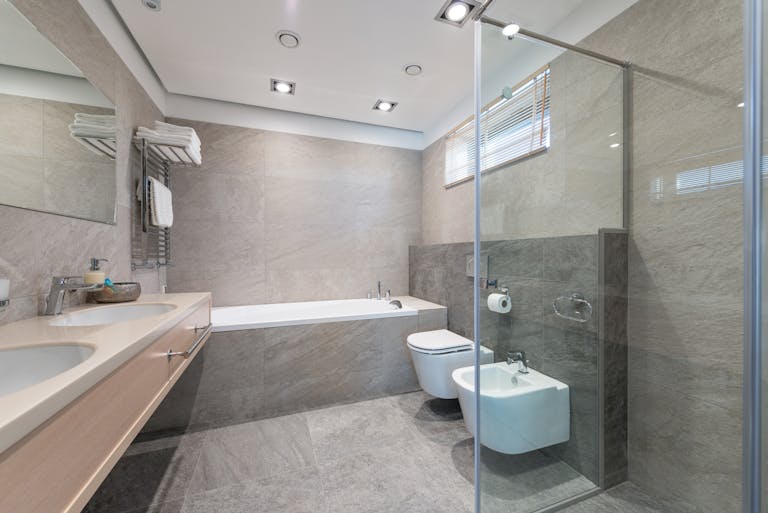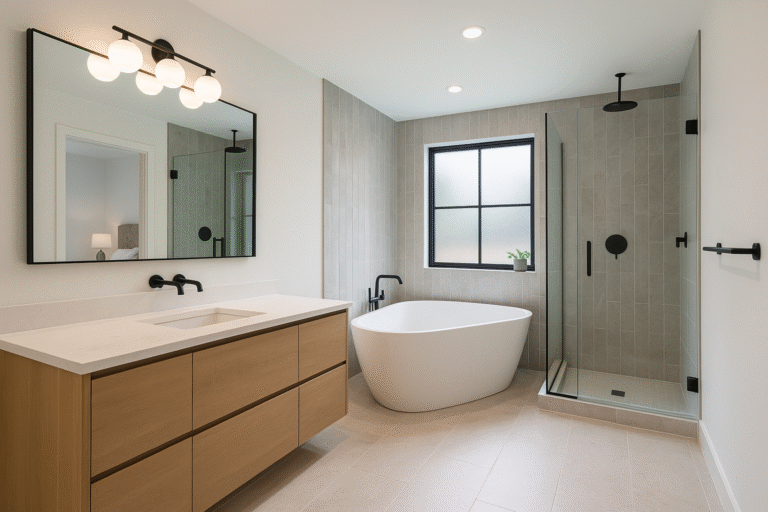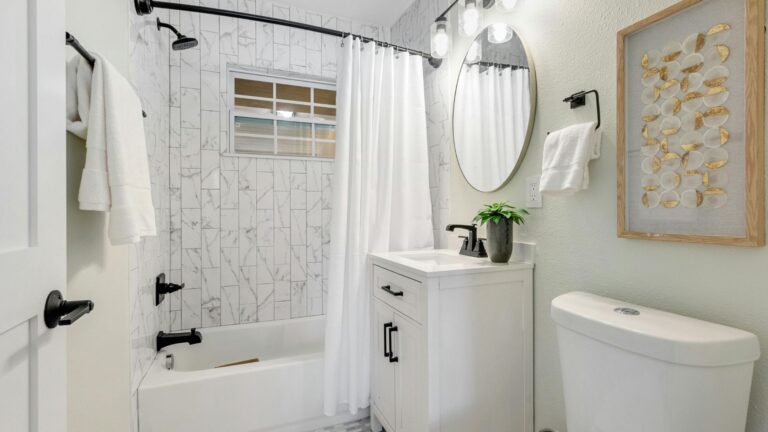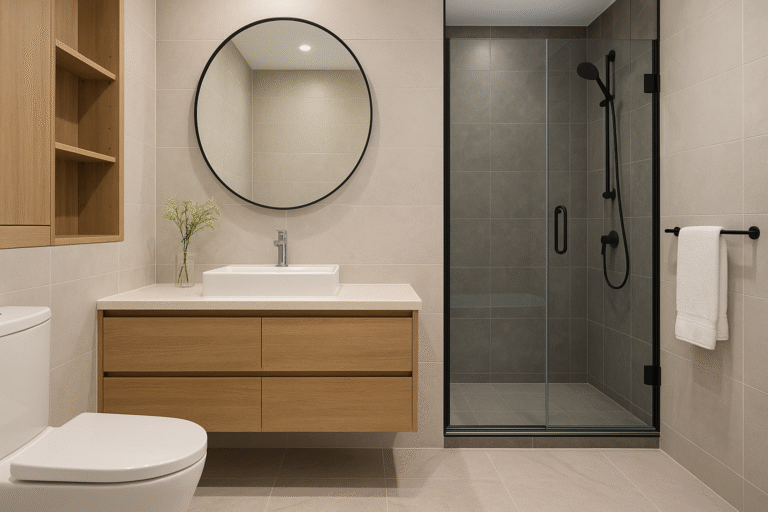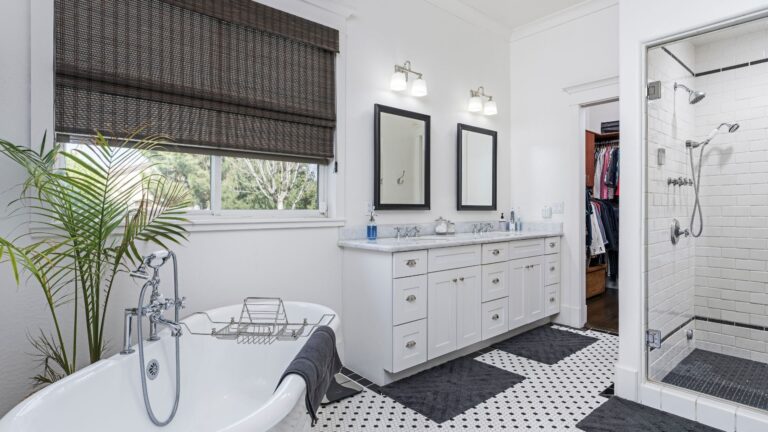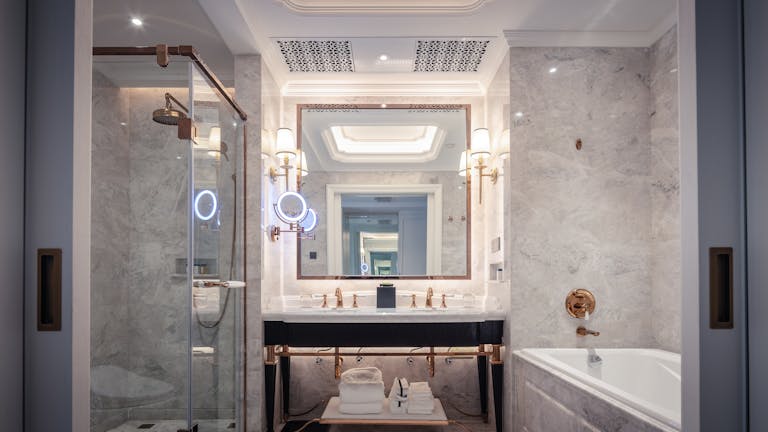Budget Planning Tips for Bathroom Remodeling
Planning a bathroom remodel can feel like standing at the edge of a pool wondering how cold the water really is. You know the plunge will bring comfort and value, yet every ripple in the budget makes you hesitate. A modern vanity or heated floor can be tempting, but without a clear plan the final price tag may shock you more than any icy dip. Many homeowners start with a rough figure in mind only to discover that small upgrades, hidden moisture damage, or changing design choices quickly add up. The key to a successful remodel is creating a budget that respects your financial limits while still delivering a space that meets daily needs and future resale expectations. In the sections that follow, you will learn how to forecast costs, anticipate surprises, and make smart decisions that keep your project from spiraling out of control.
Why Budgeting Is Crucial in Bathroom Remodeling
Every item that enters your new bathroom, from the faucet cartridge buried inside the wall to the tile that greets your feet each morning, carries a price that can swing wildly depending on quality and labor. Even if you choose modest fixtures, labor costs are non-negotiable and local building codes may require upgrades such as larger exhaust fans or dedicated circuits. Remodeling also exposes parts of the home you have not seen since move-in day, and what looks fine on the surface can hide corroded pipes or outdated wiring that demand immediate attention. When surprises appear mid-project, they often cost more to fix on the spot than they would have in a planned scope, and they can force you to cut visible comforts to pay for unseen repairs. Creating a detailed, realistic budget is not just accounting; it is an insurance policy that protects both your wallet and your peace of mind.
Understand the Average Cost of a Bathroom Remodel
Knowing what other homeowners spend gives necessary perspective when you meet contractors. National surveys show a wide range, with small cosmetic updates starting around a few thousand dollars and upscale master bath overhauls soaring past six figures. Region, size, and material choices all influence these numbers, yet labor consistently claims the largest share, often forty percent or more. Plumbing complexity drives costs higher because moving drains or supply lines requires skilled trades, permits, and inspections. Tile selection is another budget driver; natural stone needs sealing and a more precise installation process than ceramic. By studying recent local figures and breaking them into categories such as labor, fixtures, finishes, and contingencies, you can see where dollars tend to concentrate and where conscious choices can keep spending under control without sacrificing quality.
Set a Realistic Budget Based on Priorities
Before phone calls to contractors or trips to showrooms, take time to list exactly what you want this remodel to achieve. Perhaps you crave a walk-in shower for aging in place, or maybe resale value is top priority because you plan to sell within five years. When you rank goals, you can assign funding where it matters most and trim elsewhere. Create a simple allocation model: labor receives forty percent, essential materials thirty percent, design extras fifteen percent, and a ten to fifteen percent contingency for the unknown. Separating mission-critical upgrades, like waterproof backer board, from nice-to-have elements, such as a rain-style shower head, helps keep big-picture spending in check. With defined priorities you will find it easier to cut or postpone non-essential features rather than sacrificing something that drives long-term satisfaction.
Create a Detailed Remodeling Plan
A complete plan includes scale drawings, fixture selections, and a step-by-step scope of work that leaves little room for guesswork. When design decisions rest on the fly, tradespeople must pause, schedules slip, and costs rise due to extra labor or rush material orders. Detailed plans also allow accurate permit applications, avoiding fees for revisions or delays from code officials. Modern design software or simple graph paper can clarify how every component fits, ensuring that vanity doors clear the toilet and shower glass does not collide with a towel bar. By finalizing selections before demolition, you prevent impulse purchases that eat into contingency funds. A well-defined roadmap is the single best safeguard against expensive mid-course corrections.
Get Multiple Quotes and Compare Scope
Prices vary among contractors because each business has its own overhead, preferred suppliers, and labor crews. Collect at least three written estimates so you can compare apples to apples. Look beyond the bottom line; study the scope to confirm whether quotes include demolition disposal, permit fees, or premium waterproofing membranes. The lowest bid may omit essential steps or use inferior materials that compromise longevity. Conversely, a higher bid may cover tasks that others leave to homeowners, such as final paint or post-construction cleaning. Ask clarifying questions about timelines, payment schedules, and what happens if hidden damage is discovered. A thorough comparison ensures you select a partner who aligns with both your budget and your expectations for quality.
Plan for Hidden and Unexpected Costs
Even with thorough planning, walls and floors can reveal surprises once opened. Water stains around the vanity could signal rotted subfloors. Old galvanized pipes may crumble when disconnected. Electrical wiring might lack grounding or require additional GFCI protection. Prepare for these possibilities by reserving at least ten percent of the total budget as a contingency fund. If your home is older or you suspect moisture issues, consider increasing the buffer to twenty percent. Setting aside money upfront keeps stress low because you will not need to borrow or sacrifice design elements if surprises emerge. When the project completes without major setbacks, the remaining contingency can fund a decorative upgrade or simply return to savings.
Tips to Save Without Cutting Corners
A remodel can be both beautiful and budget conscious when you apply strategic cost savers. Reusing existing layout keeps plumbing in place, avoiding expensive demolition and rough-in work. Refinishing a solid cast-iron tub instead of replacing it retains vintage charm and saves hundreds of dollars. Choosing a quality porcelain tile over imported marble delivers durability without premium pricing. Purchasing fixtures during seasonal sales or closeout events trims costs on faucets and lighting. Installing energy-efficient ventilation and LED lighting may qualify for rebates while reducing utility bills, offering long-term savings that extend beyond the remodel. With thoughtful planning, each dollar stretches further while essential function and reliable performance remain intact.
Cost-Smart Ideas:
- Keep plumbing lines where they are unless they fail inspection.
- Shop clearance sections for mirrors, hardware, and lighting.
- Select mid-grade porcelain tile that mimics stone.
- Refinish or reglaze rather than replace structurally sound tubs.
- Install WaterSense-rated fixtures to cut utility costs over time.
Mistakes to Avoid in Budget Planning
A common error is beginning demolition before permits are approved, which can halt work and rack up storage or lodging expenses if the bathroom becomes unusable. Relying solely on verbal agreements leads to misunderstandings about scope and cost, often ending in change orders that inflate the budget. Ignoring small line items such as hardware or shipping fees can create a shortfall at checkout. Homeowners sometimes focus only on the upfront price of fixtures, overlooking long-term durability and maintenance costs that may outpace original savings. Finally, some fail to document design changes, leaving contractors unsure which version to follow, which increases labor as workers redo partially finished tasks. Steering clear of these pitfalls will keep your financial plan intact and your project timeline on track.
Professional Guidance Keeps Budgets on Track
Working with an experienced remodeling team offers access to trade discounts, accurate scheduling, and deep knowledge of code requirements that prevent costly mistakes. Professionals also maintain relationships with inspectors and suppliers, smoothing the pathway for permits and deliveries. Their project managers use tried-and-true checklists to track expenditures against the budget in real time, alerting you to variances before they grow into overruns. By collaborating with seasoned experts, you benefit from clear communication, transparent pricing, and the assurance that every dollar moves you closer to a finished bathroom that meets both aesthetic and functional goals.

Conclusion
A bathroom remodel is a significant investment, but with careful budgeting it becomes a controlled journey rather than an open-ended expense. Define realistic goals, research local costs, finalize designs before demolition, and maintain a contingency fund for surprises. When you take these steps, you protect your finances and create a sanctuary that adds daily comfort and long-term value to your home. If you are ready to transform your bathroom and would like expert help building a budget that respects your limits, contact Evergreen Bathroom Remodelers today for a free cost consultation and personalized project roadmap. Together we can turn your vision into a beautiful, budget wise reality.
